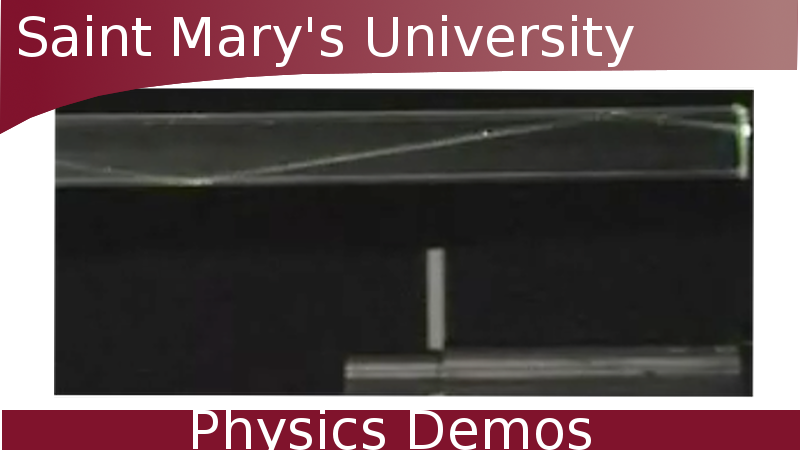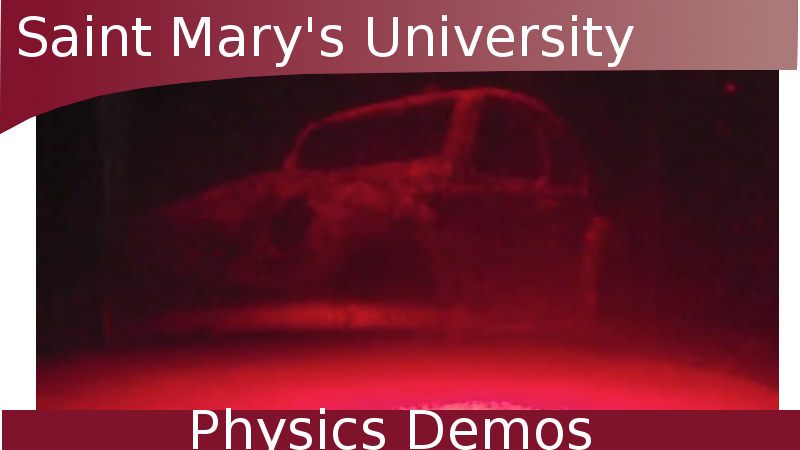Two mirrors produce a realistic virtual image!
WATCH VIDEO:
Other Demos of Interest:
Teachable Topics:
- Parabolic mirrors
- Real & virtual images
- Ray Tracing
Theory:
Real and Virtual Images: In the language of optics, there are two types of images - real and virtual.
A real image is one where the light rays actually emanate from a point. If these light rays get to the eye, the viewer sees an object at that point. As an example, think of a lens focusing light from a faraway object. All the light converges to a point. A viewer looking at the light emanating from that point will see an image of the object appear between the lens and him/her. This image is a 'real' image.
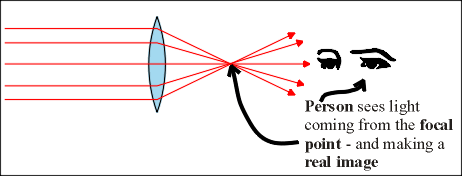
Figure 1: Light converging to a focal point
| The light rays from a virtual image appear to come from a point, but in reality they do not. This is the kind of reflected image most common to us, because it is what happens when we see ourselves in a plane mirror. Light rays leave the object, reflect from the mirror and are perceived by the eye. The direction from which light rays emanate is not the direction the eye looks to see the image. |
Parabolic Mirrors: The distinguishing feature of a parabolic mirror is that light emanating from the focal point will be reflected in parallel paths by the mirror. Conversely, light rays travelling in parallel paths directly toward the mirror will converge to the focal point. |
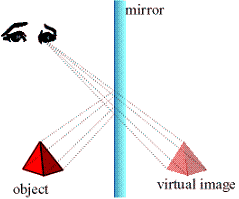 |
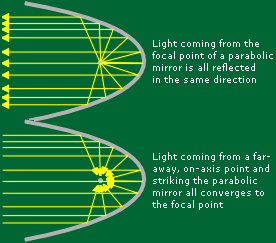 |
| The "Mirage Mirror" is really two parabolic mirrors with identical shapes. One (mirror A) lays face-up on the table while the other (mirror B), which has a hole in its centre, lays face-down on the first mirror. They are designed so that the focal point of one lies just at the vertex of the other when they are placed on top of one another. | An object placed at the apex of mirror A will be at the focal point of mirror B. Light from the object reflects off of mirror B into parallel paths. This light shines on mirror A, reflects, and converges to the point fA. This light makes a real image at fA. If you look at this point, you'll see the object appear to hover at that point, though you can't touch it, because it's not really there. |
 |
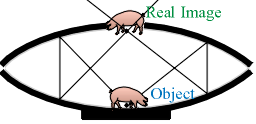 |
Apparatus:
- Mirage mirror toy (commercially available)
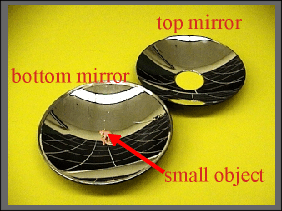
Figure 6: Apparatus
Procedure:
- Place an object at the center of the bottom mirror. The object does not necessarily have to be a small plastic pig - a small plastic dog would do equally well.
- Put the other mirror on top of the first and view the image form the side.

